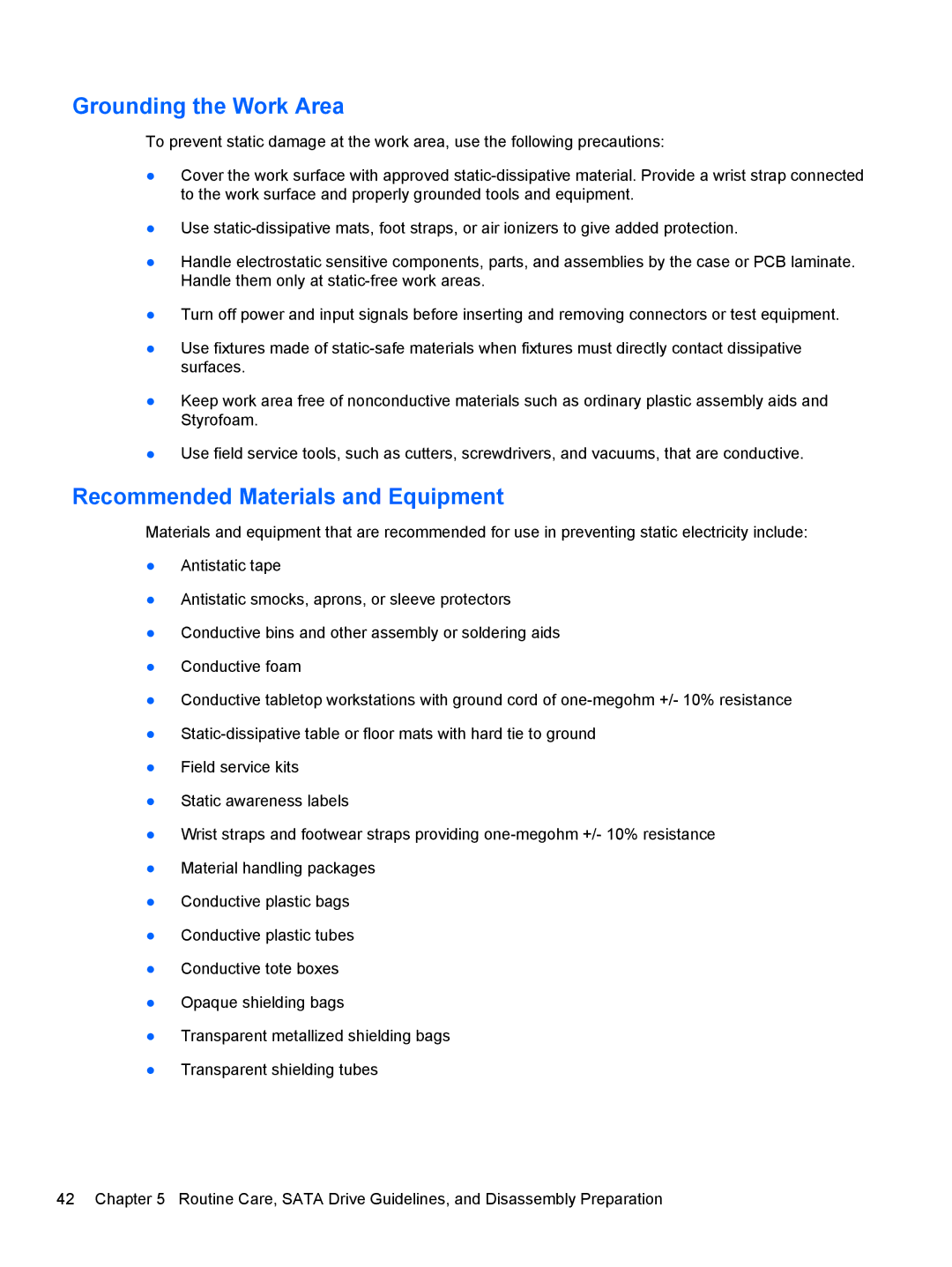Grounding the Work Area
To prevent static damage at the work area, use the following precautions:
●Cover the work surface with approved
●Use
●Handle electrostatic sensitive components, parts, and assemblies by the case or PCB laminate. Handle them only at
●Turn off power and input signals before inserting and removing connectors or test equipment.
●Use fixtures made of
●Keep work area free of nonconductive materials such as ordinary plastic assembly aids and Styrofoam.
●Use field service tools, such as cutters, screwdrivers, and vacuums, that are conductive.
Recommended Materials and Equipment
Materials and equipment that are recommended for use in preventing static electricity include:
●Antistatic tape
●Antistatic smocks, aprons, or sleeve protectors
●Conductive bins and other assembly or soldering aids
●Conductive foam
●Conductive tabletop workstations with ground cord of
●
●Field service kits
●Static awareness labels
●Wrist straps and footwear straps providing
●Material handling packages
●Conductive plastic bags
●Conductive plastic tubes
●Conductive tote boxes
●Opaque shielding bags
●Transparent metallized shielding bags
●Transparent shielding tubes
42 Chapter 5 Routine Care, SATA Drive Guidelines, and Disassembly Preparation
